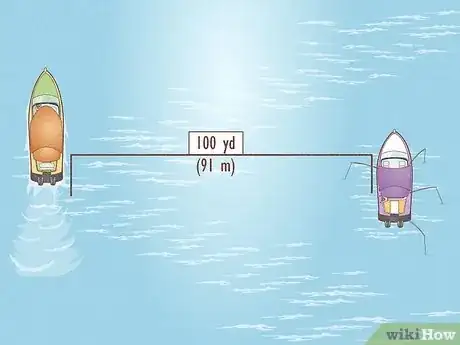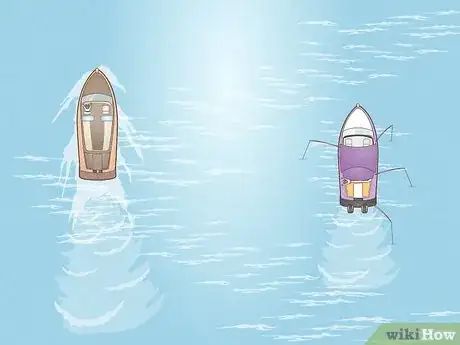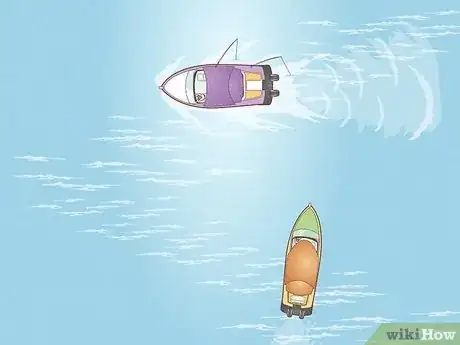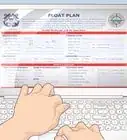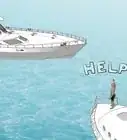This article was co-authored by wikiHow staff writer, Luke Smith, MFA. Luke Smith is a wikiHow Staff Writer. He's worked for literary agents, publishing houses, and with many authors, and his writing has been featured in a number of literary magazines. Now, Luke writes for the content team at wikiHow and hopes to help readers expand both their skillsets and the bounds of their curiosity. Luke earned his MFA from the University of Montana.
Learn more...
Just like driving a car, operating a boat comes with its own “rules of the road.” One situation you’ll encounter often when on marine roads is navigating around fishing boats. How do you do it? Who has the right of way? Luckily, there are some pretty clear guidelines when it comes to passing fishing vessels, so wonder no more. We’ll fill you in on how to pass a fishing vessel, the maritime right-of-way rules, and some other common passing situations to complete your naval know-how. Strap on your life vests and lift the anchor, we’re setting sail!
Things You Should Know
- Pass on the port side and signal your maneuver with 2 short honks. Otherwise, signal a starboard-side pass with 1 short honk.
- Reduce your speed to eliminate your wake before you pass a fishing boat, to prevent disturbing the workers or the fishing lines.
- Pass at a distance of at least 100 yards to give the fishing boat ample space, but also pass as wide as you reasonably can.
- Fishing boats with lines or nets cast have the highest priority when it comes to right-of-way, and it’s your responsibility to maneuver around them.
Steps
Passing
-
1Pass on the port side, and signal with 2 short honks. If possible, pass on the port (left) side of the fishing boat, and give 2 short blasts of your horn (about 1-second long, each) before your maneuver. If you can’t pass on the port side for any reason, give a single short blast to signal that you plan to pass on the starboard side. Then, wait for the other boat’s reply: a matching horn blast means you’re clear to pass.[1]
- A differing horn blast in reply means that, for whatever reason, the fishing boat is not ready for you to pass. Either wait until they are ready (and communicate with them via radio in the meantime), or find a different route.
- International rules require 2 long (4-6) second blasts plus 2 short blasts for portside passing. For starboard passing, the signal is 2 long and 1 short blast.
-
2Slow to a no-wake speed. Slow down to a speed that eliminates your wake, so that you pass the fishing boat without disturbing their lines, nets, or fish.[2] This speed is different for every boat, but can be easily found simply by observing the water’s disturbance behind your boat as you sail.Advertisement
-
3Give the fishing boat at least 100 yd (91 m) of space. Anchored or stalled fishing vessels often have lines or nets that extend away from their boat, above or just below the surface of the water. Pass at a distance of at least 100 yd (91 m) to avoid any tangles.[3]
- In addition, put your boat into neutral as you pass to avoid clipping any lines or nets with your propellers.
Other Passing Situations
-
1Overtaking When both vessels are moving, the vessel being passed has the right of way and must be accommodated. This vessel must also hold its course and speed to allow the passing vessel to safely maneuver.[5]
- In maritime interactions, the boat that will be maintaining its course and speed is called the “stand-on” vessel. The boat taking action is called the “give-way” vessel, and has a responsibility to make its move safely and with consideration for the stand-on vessel.
-
2Crossing paths When 2 boats have intersecting courses, the boat on the starboard (right) has the right-of-way, and must maintain its course and speed. The vessel on the port (left) must alter its course and speed to pass astern (behind) the starboard vessel.[6]
-
3Meeting head-on When 2 vessels are moving directly toward each other, it’s expected that they pass each other on their port sides (so that the left-hand sides of each boat face each other when passing). When passing port-side, both boats ought to give a single short-honk agreement.[7]
- If port-side passing isn’t possible, the vessels are expected to pass on their starboard sides, and issue 2 short honks in agreement.
-
4Take whatever action is necessary to avoid collisions. Sometimes, the situation might call for unconventional or otherwise non-standard maneuvers, such as when encountering an inexperienced skipper who may not understand the rules, or when there’s low visibility. In these situations, take action as early as possible to avoid a collision, even if it violates standard maritime rules.[8]
- In low-visibility situations, sound your horn often to alert other boats to your presence.
References
- ↑ https://www.uscgboating.org/images/420.PDF
- ↑ https://www.ncwildlife.org/portals/0/boating/documents/vog.pdf
- ↑ https://www.boatsafe.com/when-one-boat-is-overtaking-another-which-boat-must-give-way/
- ↑ https://www.boatsafe.com/when-one-boat-is-overtaking-another-which-boat-must-give-way/
- ↑ https://www.tva.com/environment/recreation/boating-safety-101
- ↑ https://www.uscgboating.org/images/420.PDF
- ↑ https://www.uscgboating.org/images/420.PDF
- ↑ https://www.godownsize.com/do-boats-pass-right-or-left/


